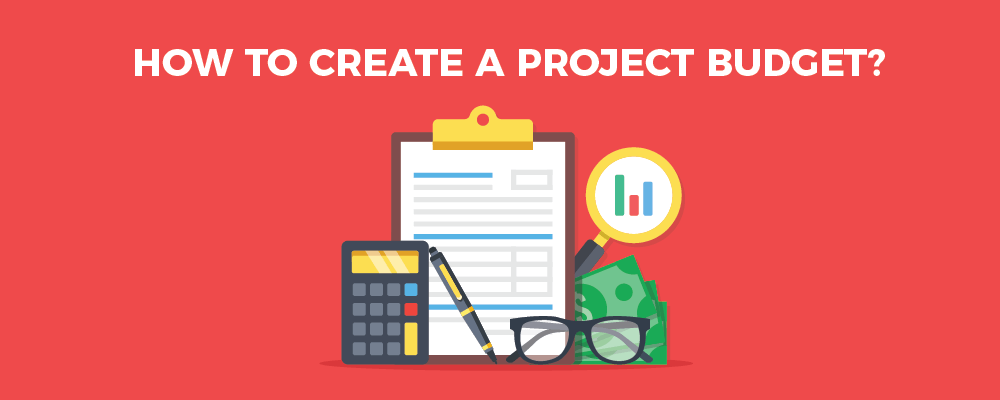A project without a budget is a body without a brain. It doesn’t make any sense. Funding for a project is the most crucial factor in the development cycle that keeps the wheels running and everything in check.
When the importance of something is this high, the project managers in charge of the whole operation need to devise it as soon as possible during the kick-off phase of the whole operation.
If you are working in the position of a project manager, then creating and keeping your team following the proposed budget would most probably be the whole extent of your responsibilities in that company.
At first, the whole budgetary process seems quite daunting but eventually, you will realize that to start the whole process, all you need is a detailed plan of all of the activities that are to be performed during the development phase of the project or a work breakdown structure.
What that would do is it will provide you with an idea about the whole expenditure structure and how you need to allocate the money according to the severity and importance of each task.
In this article, we will tell you about the whole project budget creation procedure which will consist of everything from the project budget definition and importance to some of the different estimation procedures designed to track and estimate different expenditures related to the project.
Let’s start at the very beginning.
What is a Project Budget?
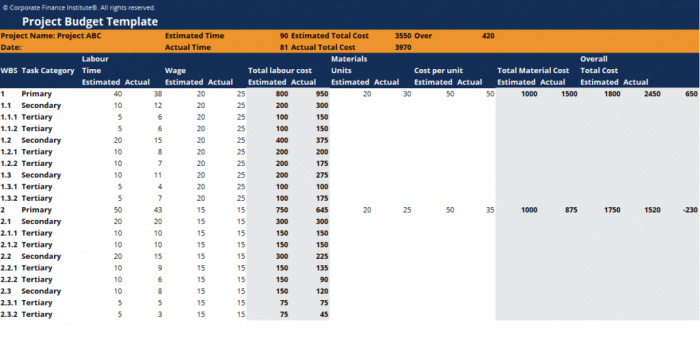
A project budget is the amount of money needed to complete the development of all of the phases of the project. This budget is used to estimate the possible costs of every tool and element included in the project development procedure.
This budget will include everything from material procurement costs, operating costs to labor costs. But it’s not just a static document that is nailed to the door at the start of the project. This budget might change from time to time depending on the varying requirements.
Why Do You Need a Project Budget in the First Place?
Well, we know that project development in this day and age costs a pretty penny but how much is enough? To cover all of the expenses of the project and everything connected to it, there should be a plan at hand, and that plan is the Project Budget.
But one thing that you do have to remember is that this budget is not just to get the obvious things out of the way like rent or salaries. Yes, you do have to do those things but this budget allocation covers many other requirements.
Project Cost Categories
1. Traveling Expenditures
This expenditure is done by the team members who have to travel from place to place to do project work. This amount also includes the expenditure of food or lodgings they acquire during their travel.
2. Human Resource
This amount is the money set aside to pay the permanent and temporary employees working at the company, at the end of every month.
3. Training Fees
These include all the money spent to train the employees through workshops and other outside interactions to make them more capable, workers.
4. Material Resources
This includes all the money to be spent on different software or hardware that is necessary for the project development procedure.
5. Research Expenses
All the expenses spent on gaining knowledge about the project through research or brainstorming ideas fall under this category.
6. Capital Expenditures
All the equipment and technology upgrades are necessary to complete the project in this category.
7. Professional Services
Lawyers, market researchers, consultants, etc. who are hired by the company to see through a seamless development of the project are paid by this money.
8. Contingency Reserves
This is the money that is kept under reserve for the time if the project goes over its originally proposed budget.
What are the Different Estimation Approaches to Estimate a Project Budget?
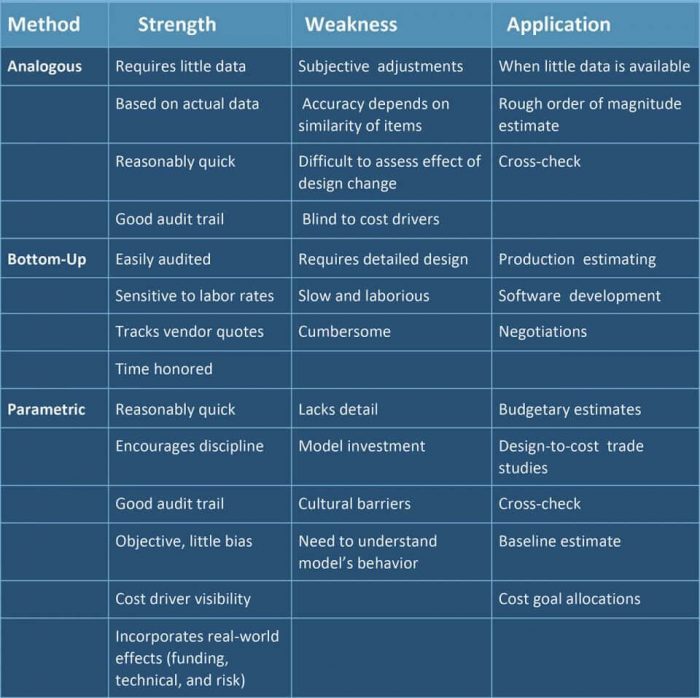
Source: Smartsheet.com
The following are some of the different ways that you as a manager can use to estimate the accurate cost of everything related to your project. These approaches can vary from project to project depending on how they approach planning. They are:
1. Bottom-Up Estimation
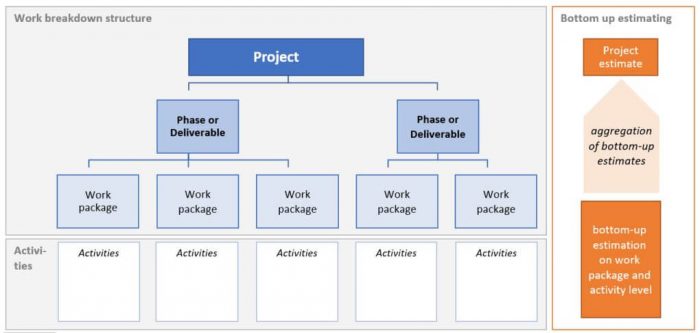
This estimation is one of the most effective estimations on this list of different ways to prepare an accurate project budget.
Why? This estimation enables the managers to track and estimate the cost of all of the different elements associated with the project like tasks, phases or milestones and rounding them up to get the complete project cost.
The benefit of using this estimation is that the managers can easily track all of the tasks related to the project and can judge when the project is going to go over the budget by looking at the results of the estimation.
The con to using this estimation is that it takes a lot of time to process all of the numbers and other estimation data because it takes time to go down to the root level of the project and track every individual task.
2. Top-Down Estimation
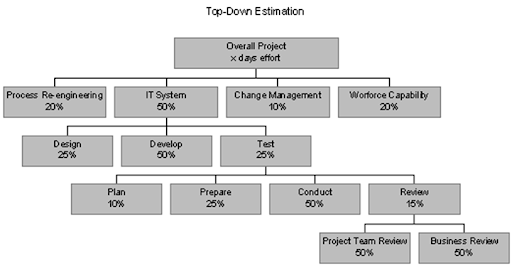
Source: Guzelblog.com
Top-down estimation is the complete opposite of the functionality to the Bottom-up estimation. How? Well, in the upper-mentioned estimation, you had to go to the grass-root level to gain data and then compile it to get the complete result.
In this estimation, the project managers start with the total and work their way down to the smaller chunks. This helps them to allocate a specific number of hours to every task and milestone related to the project.
This estimation is useful at the start of the project to find out the estimate of all of the tasks related to the project when the client has provided the company with a sufficient amount of money upfront.
The disadvantage of this estimation is the sloppiness because how can you determine a budget when you don’t even understand the project plan or the scope of work.
3. Analogous Estimation
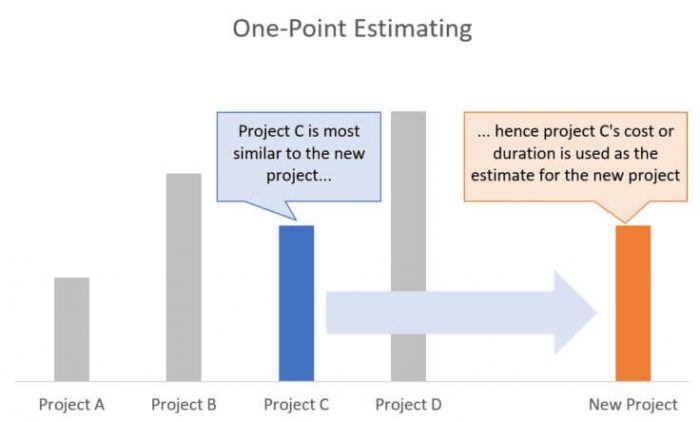
If you have been working in the project management paradigm and have managed a few projects before you were assigned this current project then you would probably have some idea what to do and what not to do.
Analogous Estimation uses just that previous knowledge that you have. This estimation uses the data you collected in your previous projects and enables you to get the best idea on what to do and what not to do depending on the victories or losses of the previous projects.
One thing that you need to understand is that every project is unique and just because some of the requirements are similar, it doesn’t mean that you apply the same practices on it as you did on the previous ones.
When this scenario comes then you should look outward and find the most suitable resemblance in other projects in the market and find the best procedure to tackle your assignment.
The disadvantage to this estimation is that it is not as accurate as the bottom-up estimation but the best thing about is that it can be used to get a rough idea about the tasks as it is super quick and can be performed even when you have very limited info about the project.
4. Parametric Estimation
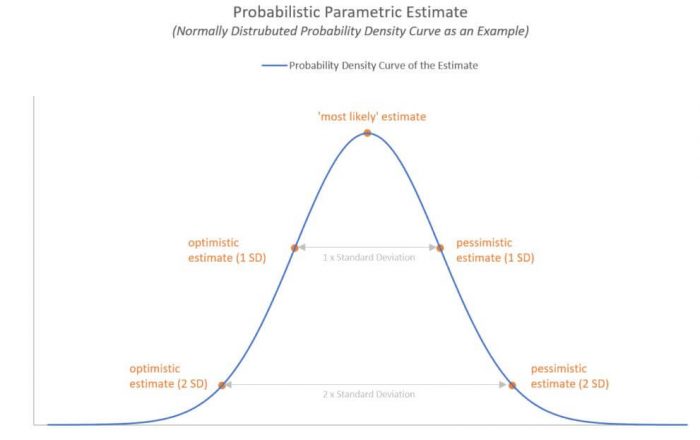
In opposition to the analogous estimation, this one is much more accurate. Parametric estimation takes all of the data points or cost variables from different areas of the previous projects that you have worked on.
All of these data points when applied to the current project, enable you to make the best decisions possible. The main drawback to this estimation is that when you are working with digital projects, it’s very hard to find data points that might be useful to your project.
5. Three-Point Estimation
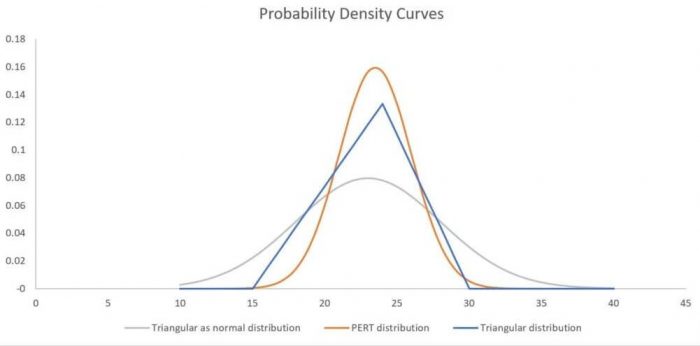
Three-point estimation is one of the best options for projects in today’s world. What happens in this estimation is that the managers take three types of scenarios into account. The best, worst and most likely.
This enables them to have multiple data points and encourages them to think about their project from multiple perspectives, resulting in a more realistic estimation of the cost.
The upside to using this estimation is that it drastically reduces the chances for the project to go over-budget and the downside to using it is that it is sometimes a tiny bit longer to complete a budget estimation but hey! At the end of the day, the more you spend time researching and working on your project, the better.
Steps to Create a Quick Project Budget
Here are five steps that you can use to create a quick project budget in no time:
- The first step is to break the entirety of your project into smaller chunks like milestones and tasks
- The next step is to conduct a proper estimation of every element that you mapped out in the first step
- Furthermore, you have to merge all of the estimations that you have gathered so far
- The next step is to map out all of the taxes and contingencies that are bound to happen during the project development phase
- The last step is to talk to the manager and get the approval of all of the tasks that you mapped out
What is Budget Management in the Project Management Process?
Budget management has a very important role in the project management industry. Everything is tied to financial resources – and we all know that they are finite.
If that budget is not properly managed, then what’s the point of proceeding with the work that you put into the development process in the first place?
Project Insight defines project budget management as:
“Project budgets, similar to resource plans, are a reflection of project work and the timing of that work. A comprehensive budget provides management with an understanding of how funds will be utilized and expended overtime for projects or operations.”
How to Calculate Project Costs?
To calculate the accurate project costs, you need to use a budget template from any reputable source that matches your project scope perfectly.
If you don’t already have a source in mind then here are a few sources that you can use to find the best project cost templates for your project.
- If you don’t have a clear idea of how to calculate project costs and the planning and thinking that goes into it, then you can consult this guide to get a clear vision of what to do
- When you have got an idea of what to do to calculate project costs, you can check out the templates from ProjectManager.com, to help you get work done
How to Manage a Project Budget? What are the Challenges & Solutions Associated With It?
If you are on this step, then congratulations, as you now have some idea on how to get things started and charter a course towards successfully managing the budget for your project.
Let’s not look at the different challenges you are going to face while attempting to manage a project budget.
Challenges
- Inaccurate or optimistic estimates that you can’t meet once the project starts
- Inaccurate timesheets that need to be double-checked and then revised
- Not knowing you’ve gone over budget until after the fact when it’s too late
- Team members not have the information on how much time they have left to complete a task or a project
Solutions
These challenges are quite difficult but fortunately, we have a solution divided into different little steps that you can perform to get rid of all of your problems regarding project budget management.
They are:
1. Upgrade Your Expense and Time Tracking Software
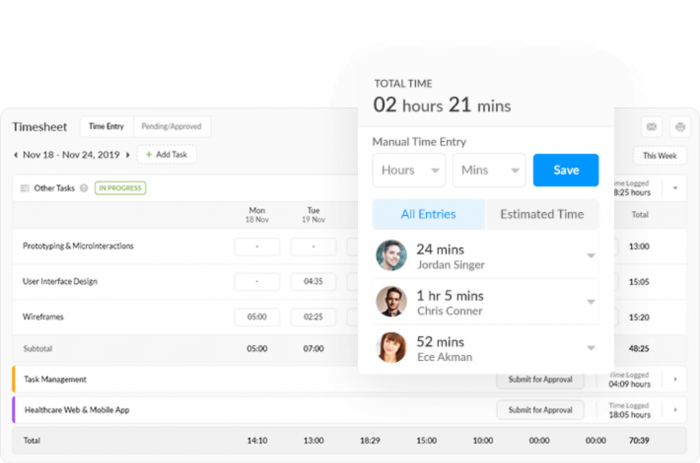
Time tracking and expense tracking are important elements in the project budget management process, and you need the best project management software to perform these elements effectively.
If you need the perfect software to perform these activities within one interface, then you should try nTask.
It is an amazing project management software that enables you to perform both of these processes easily and also manage all of your other PM activities seamlessly.
2. Keep Your Eyes Open for Scope Creeps
One other important part of project budget management and project management as a whole is weeding out scope creep.
These are potential enemies of the project and as a project manager, you need to make sure that you eliminate them at the start of the project development process so that you don’t face any damage in the future.
Try nTask to detect, track, and analyze scope creeps, and make your projects secure.
3. Determine the Hierarchy
In this step, you nominate the person who is going to be in charge of the whole shebang. This will help you to avoid any uncomfortable situations in the future.
4. Improve Communication
One of the most important things you have to do as a project manager and someone who is managing the project budget is to make sure that there is ample communication among all of the people involved in the different development processes regarding the software.
This will make sure that everyone has the same information and there is no room for any blank spaces.
5. Make Room for Change
The last step is to make sure that you have enough space in the project development process to incorporate change.
This will help you evolve your project into something better when something more beneficial comes along for it.
What are the Benefits of Project Budget Management?
Here are some of the benefits that you can get from properly managing your Project Budget. You can:
- Copy a budget from another year, quickly manipulate a budget up or down using amounts or percentages, and use an unlimited number of budget distribution tables
- Enter details into a notepad of how the budget for a particular account was developed
- Project remaining actual amounts based on year-to-year results and the annual budget
- Track adjustments as the fiscal year unfold
- Budget for both projects and accounts
- Create your budget using current or any previous years’ budget information
- Define one account’s budget as a percentage of another’s budget
- Record budget adjustments and report on your original or adjusted budget
Conclusion
The points mentioned in this article will help you create your project budget that can result in successful project execution and results. If you want to share your feedback, reach out at fwilson@ntaskmanager.com

